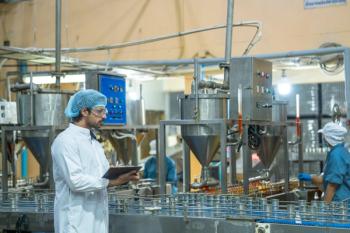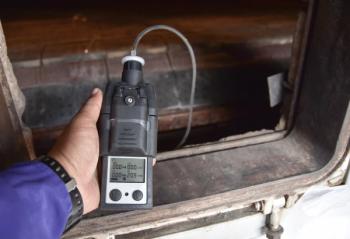
Scientists Use Portable Raman Device to Detect Natural Carcinogen in Peanuts
Jiangsu University scientists developed Raman-based system for detecting aflatoxin B1 (AFB1), a byproduct of the most common fungus that can arise in moldy peanuts.
In a new study out of Jiangsu University in China, scientists developed a new portable system that uses Raman spectroscopy to detect aflatoxin B1 (AFB1), a byproduct of the most common fungus that can arise in moldy peanuts. Their research was published in Spectrochimica Acta Part A: Molecular and Biomolecular Spectroscopy (1).
Portable spectroscopy systems enable scientists to do more in the field analysis. Metrohm, for example, has a handheld Raman system that is being used for fentanyl detection (2). Another study from Nanjing Forestry University used a portable hyperspectral imager to help detect maturity stages in Camellia oleifera fruits (3). These portable Raman tools allow scientists to get accurate measurements outside of the laboratory.
In this study, a portable Raman system was used to measure AFB1 a carcinogen in peanuts. Peanuts are a vital oilseed and economical crop, mostly for their rich content of proteins, fats, vitamins, and various nutrients. Peanut yield and cultivation areas have shown continuous growth over the past decade, allowing for more substantial material foundation for ensuring national food and oil supply security. However, during the consumption process of peanuts, storage is highly critical; improper storage can lead to vast bacterial and fungal growth, causing adverse effects on the quality and safety of peanuts, especially in high-temperature and high-humidity conditions. If fungi or mold spores grow unchecked, mycotoxin levels can become very high and lead to symptoms of mold exposure and toxicity (4).
The most prevalent fungus is aflatoxin, which can generate aflatoxin B1 (AFB1). This toxin can be very dangerous for humans and animals, leading to health issues like liver cancer when consumed via contaminated peanuts and their derivatives over an extended period (5). In fact, the International Agency for Research on Cancer (IARC) has categorized AFB1 as a Group I carcinogen. As such, monitoring AFB1 levels in peanuts is very important.
Read More:
In this study, Raman spectroscopy was used to monitor AFB1 levels in moldy peanuts, with hopes of providing a reliable theoretical basis for peanut storage management. First, different degrees of moldy peanuts were spectrally characterized using a portable Raman spectrometry. Next, a two-step hybrid strategy for feature selection was proposed. Specifically, it was proposed that backward interval partial least squares (BiPLS) and variable combination population analysis (VCPA) could be combined, with the aim of simplifying model complexity and enhancing predictive accuracy. Finally, partial least squares (PLS) regression models were constructed based on different feature intervals and wavelength points.
Read More:
The research showed that with the PLS regression models, the version using the optimized feature intervals and wavelength points exhibits improved predictive capability and generalization performance. Notably, the BiPLS-VCPA-PLS model, which was established using two-step optimization, selects nine wavelength variables, achieving a root mean square error of prediction (RMSEP) of 33.3147 µg kg-1, a correlation coefficient of the prediction set (RP) of 0.9558, and a relative percent deviation (RPD) of 3.4896. These findings show that the two-step feature optimization method, which combines feature interval selection and feature wavelength selection, can more accurately identify optimal variables. This enhances detection efficiency and predictive precision.
References
(1) Jiang, H.; Zhao, Y.; Li, J.; Zhao, M.; Deng, J.; Bai, X. Quantitative Detection of aflatoxin B1 in Peanuts Using Raman Spectra and Multivariate Analysis Methods. Spectrochim. Acta Part A: Mol. Biomol. Spectrosc. 2024, 316, 124322. DOI:
(2) Lavery, P. Handheld Raman to Fight Fentanyl–A Crucial New Use for an Established Tool. MJH Life Sciences 2024.
(3) Acevedo, A. Fruits’ Maturity Stages Measured Using Portable Hyperspectral Imagers. MJH Life Sciences 2024.
(4) Granek, P. The Solution to Mold in Peanuts: Symptoms of Mold Sickness. AtMyTable 2023.
(5) Aflatoxins. U.S. Department of Health and Human Services 2024.
Newsletter
Get essential updates on the latest spectroscopy technologies, regulatory standards, and best practices—subscribe today to Spectroscopy.





